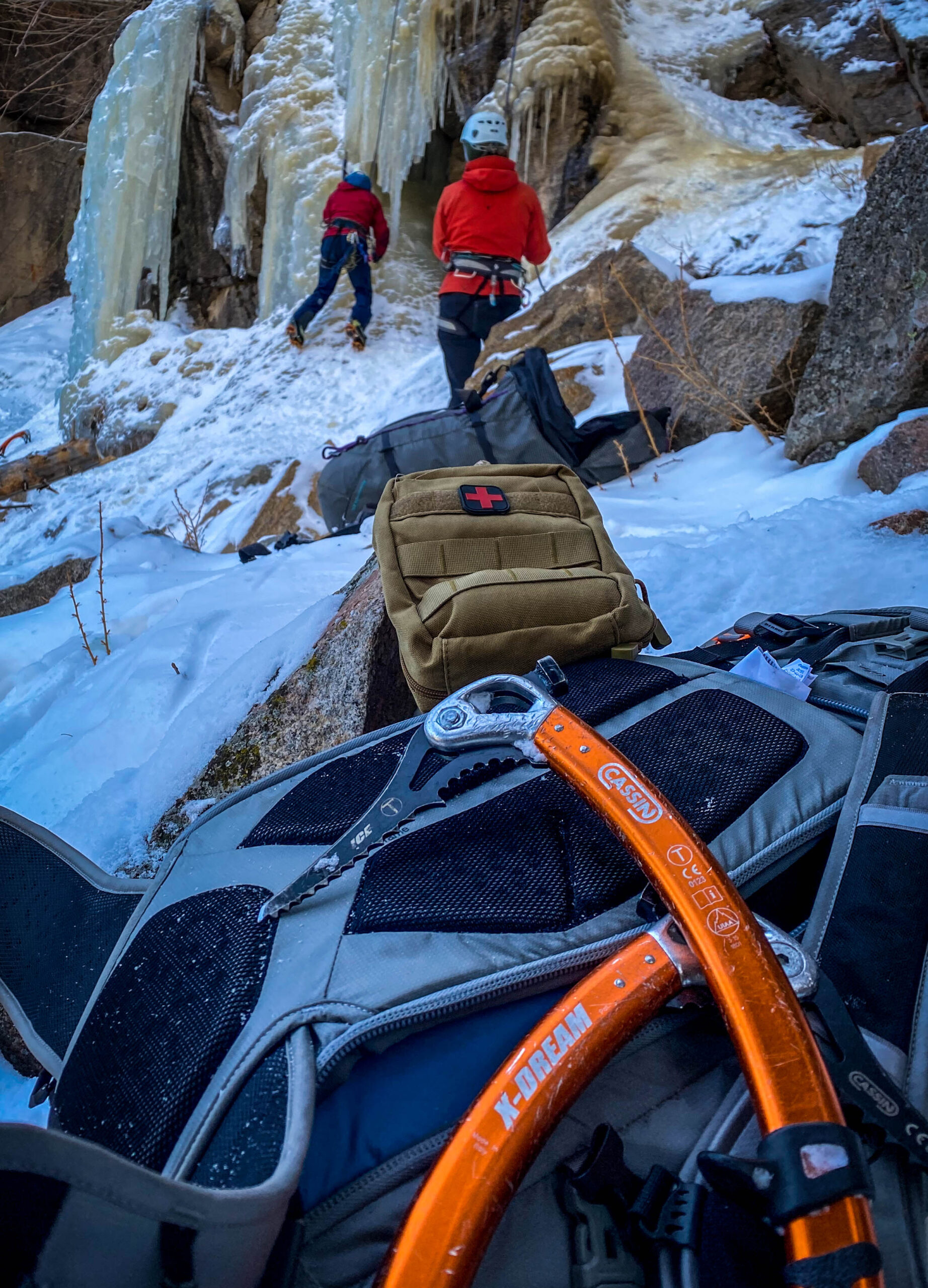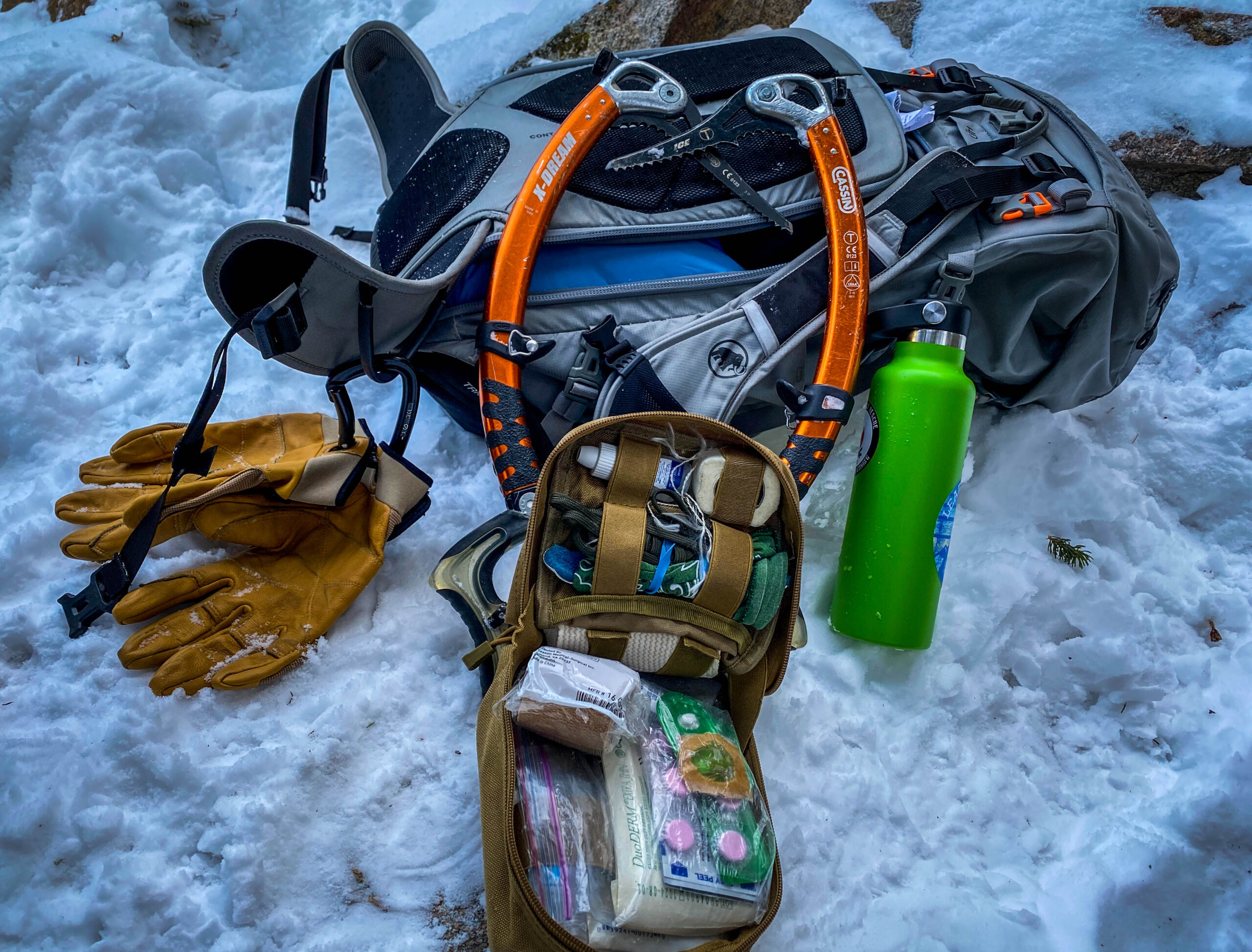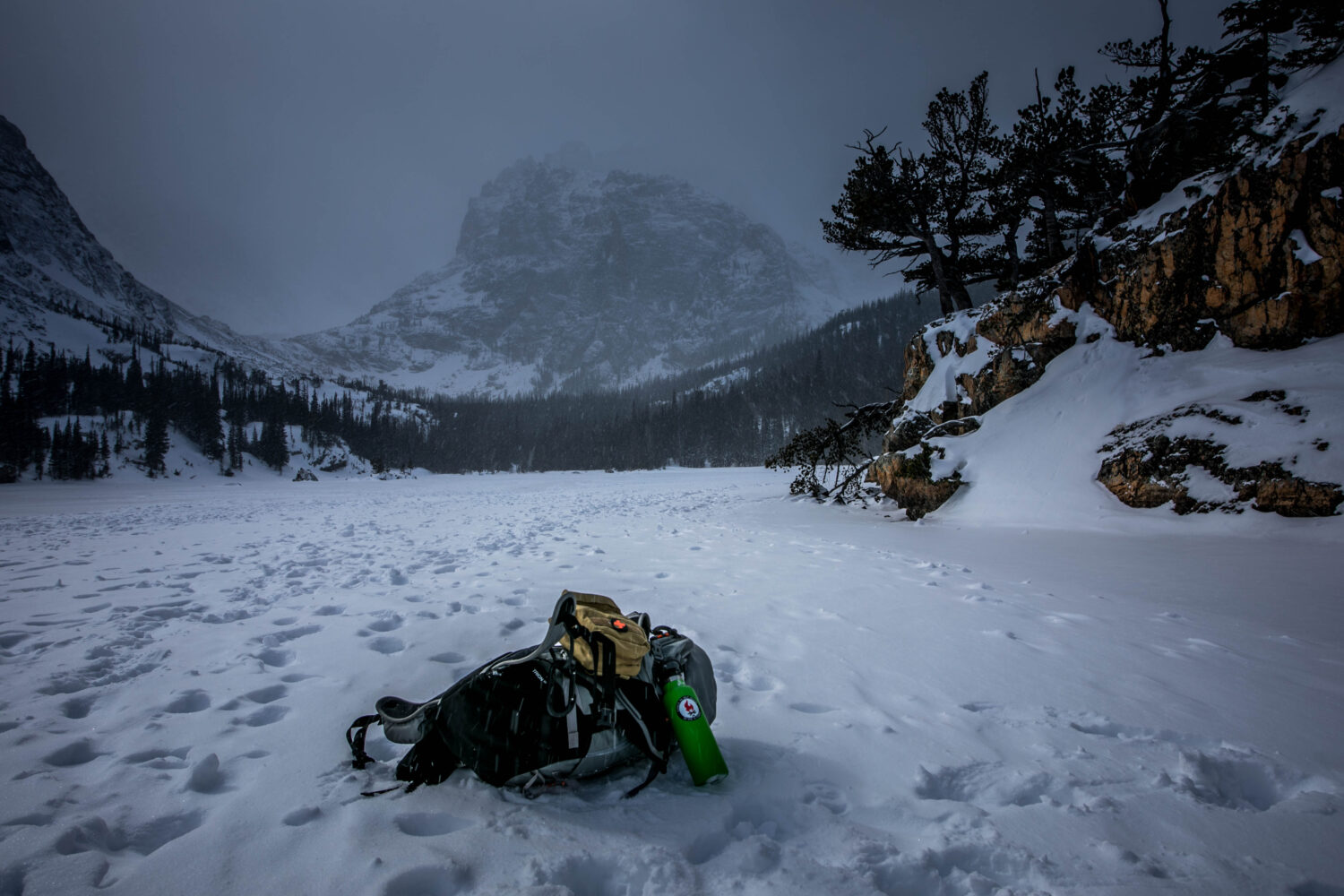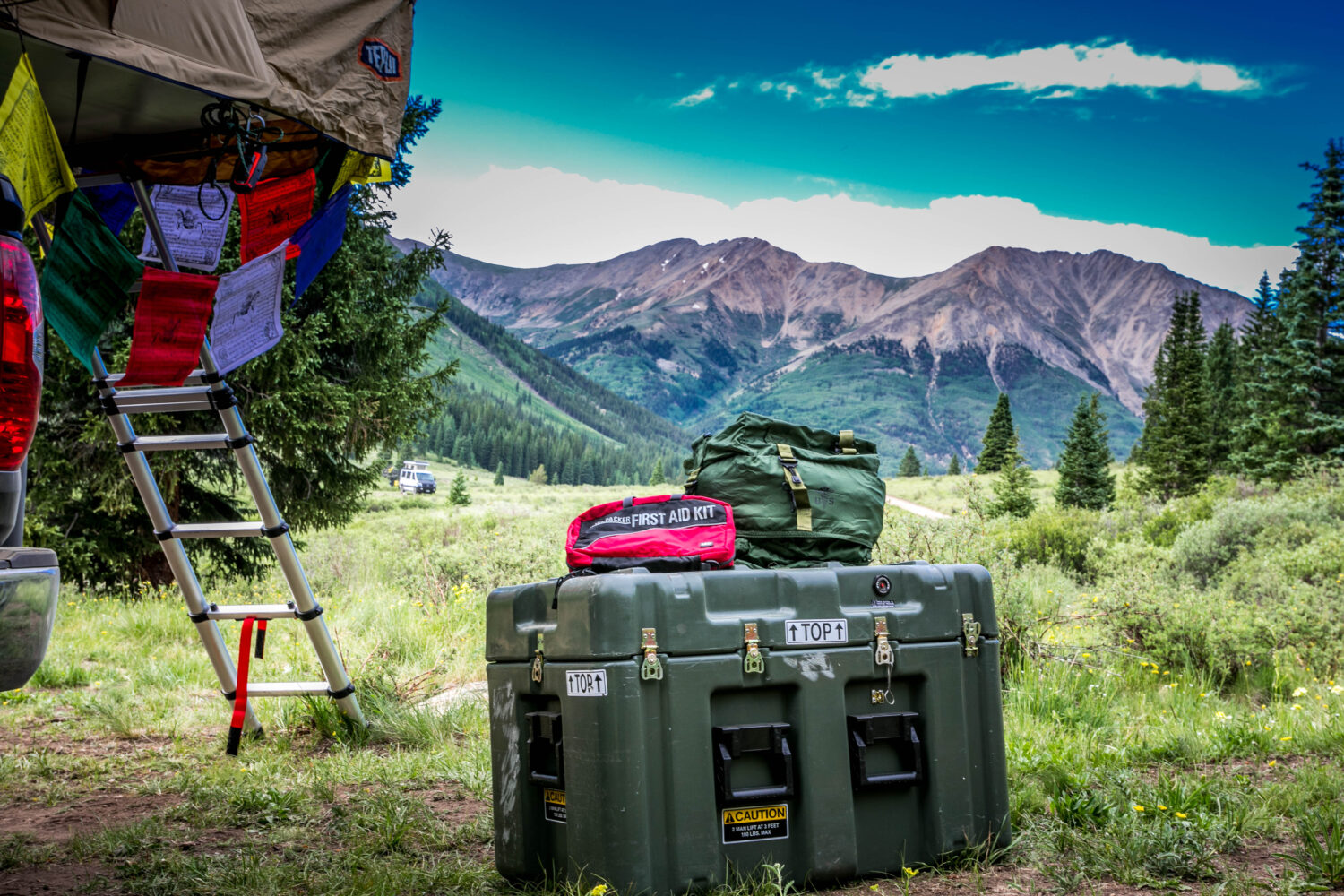All bleeding stops, eventually. This morbid maxim, with two very different outcomes, is taught to first-year surgical residents during day one of rotation with the trauma surgery service. The moral being that if medical professionals do not learn their craft well, a patient could bleed out. The same dire lesson is especially true for anyone who chooses to travel in the backcountry. It is possible, though, for overland travelers to take control of a bad situation in an austere setting until help arrives or the patient can be evacuated to a higher level of care. The key is having the right tools and knowing how to use them.


When packing a medical kit for the backcountry, I am reminded of an old M*A*S*H rerun I watched with my grandfather as a child. In this episode, the unit’s chaplain and company clerk, Father Mulcahy, and Corporal Walter “Radar” O’Reilly respectively, travel outside the wire to pick up a soldier with a severe chest wound. Through a strange turn of events, the patient develops a compromised airway, and Mulcahy is forced to do a tracheotomy using just a pocket knife and tubing from an eyedropper. With the patient’s airway restored, they transport him back to base where the surgeons and medical staff are waiting.
Unfortunately, this article’s readers will not learn the skills necessary to conduct a field-expedient tracheotomy; blame for that falls squarely on the legal department. The takeaway lesson, though, is that by developing the proper skill set and knowing what supplies are available, almost anything is possible when you are beyond the call for help. An off-the-shelf medical kit may provide a time-efficient way to pack, but usually calls into question the usefulness and quality of its contents. Packing a kit designed to meet the needs specific to the environment, objective, and individual group members affords you the assurance of knowing what is on hand should the need arise. Additionally, medical courses designed to meet the challenges associated with wilderness travel can help to develop the skills necessary to use the kit effectively.


Anticipating the medical challenges specific to traveling in remote areas can be quite nebulous. As each environment presents specific challenges associated with overland travel, the same is true with the medical challenges to be expected. Gathering equipment and medications specific for the expected hazards aids in creating that bespoke medical kit dreams are made of. Researching the common flora and fauna in the area, specific environmental hazards, and the endemic diseases present is an essential pre-trip task for the team’s medic. Having this information on hand before departure is crucial to filling in the void of information necessary for expedition preparedness.
Is malaria present? If so, the group members will need to see a physician in order to obtain medication specific to the strain that will be encountered in the region of travel. If travel will occur at high elevation, having medication on hand to treat altitude sickness may be warranted. Prior knowledge of the types of animal or insect envenomation in the area will allow you to prepare the proper gear to manage those situations. Pro tip, field care for a jellyfish sting is not the same as for that of a scorpion, and urinating on your buddy’s leg for the latter is not going to have anyone singing your praises as a medical hero.
A fine-tuned team will have a clear division of labor that relies on the strengths of each of its individual team members. The duties of each member start long before the rubber meets the road. For the expedition’s medic, those duties should include gathering a solid medical history from each of the party members. Information to have on hand for each person, including the medic, should at least include a list of current medications, allergies, ongoing medical conditions or limitations, past medical and surgical history, and blood type. While some of this information may be obvious, it does not go without saying that knowing this information beforehand will help plan what to bring and limit non-essential equipment.
Experience has taught me that every trip, whether out for a weekend or multiple week expedition, runs into the same dilemma. That is, with limited cargo space available, what gets packed and what is left behind? Any expedition medic worth his or her salt will follow a simple guideline: every item should have multiple uses. The only caveat being that if that item serves as an indispensable piece of lifesaving equipment, it should be included in the kit.

Regardless of how fancy that shiny new medical equipment is, it will not do anyone any good unless they know what to do with it. For that reason, taking a medical training course geared for at least one level above what you think will be necessary is imperative. There are many organizations that offer classes aimed toward both the civilian outdoor recreationalist and to medical professionals looking to expand their skill set.
A foundational course, such as Wilderness First Aid, is a great first step in learning basic wilderness medicine skills and covers a wide array of interventions, from the initial patient assessment to the evacuation phase. For those seeking a deeper dive into medical training, including planning multi-day adventures in austere environments, the Wilderness First Responder course provides an excellent next level up. This course provides a more in-depth look at caring for and evacuating patients, and teaches thorough decision-making skills for patient assessment and care.
Looking for a course designed for extensive endeavors into the backcountry? The Wilderness Emergency Medical Technician (EMT) is that course. This four-week training program provides the education necessary to earn both standard and Wilderness EMT certifications. For medical professionals who would like to hone their medical skills for wilderness endeavors, the Advanced Wilderness Life Support certification is an excellent fit. This course builds on preexisting knowledge and expands on it, teaching the skills necessary to improvise in austere environments.

After over 15 years of practicing medicine and countless hours of traveling in the backcountry, I have come to realize that no matter how deluxe the equipment or how well-trained you are, lacking familiarity with the equipment on hand will result in an ineffective medical provider. When the situation goes sideways and it comes time to implement skill and knowledge, the patient will be better served if you practice, practice, and practice some more. One final thought to consider is you must be prepared to improvise, because you are bound to run into a situation you are completely unprepared to tackle. Always be ready to self-rescue.
Resources: Advanced Wilderness Life Support Paperback Edition 2.0; Copyright 2021 By Richard J Ingebretsen, MD PhD and the University of Utah School of Medicine
Our No Compromise Clause: We carefully screen all contributors to make sure they are independent and impartial. We never have and never will accept advertorial, and we do not allow advertising to influence our product or destination reviews.


